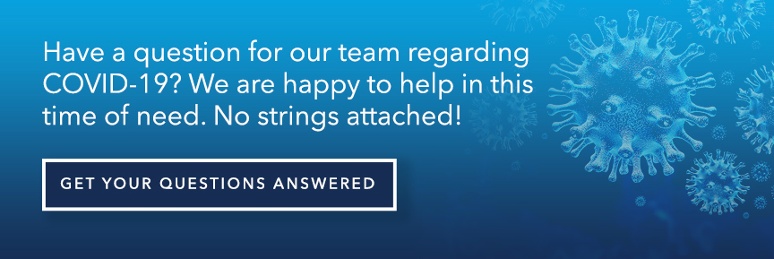.jpg)
The US Chamber of Commerce reports that close to 25% of small businesses in the US are already temporarily closed and that 40% anticipate shutting down by the end of April. A whopping 43% are concerned that they will be forced to close for good within six months. However, most small business owners are optimistic about a return to normalcy post-pandemic, saying they expect to be hiring again within the year.
Why?
CARES Expands SBA Loan Programs
One of the biggest reasons for this positive thinking is that Congress, through the Coronavirus Aid, Relief, and Economic Security act (CARES) has dumped hundreds of billions of dollars into the Small Business Administration's piggy bank, making more loans and grants available to small businesses trying to weather the COVID-19 storm.
The CARES Act added the Paycheck Protection Program (PPP) to the SBA's loan and grants menu as a companion to the existing Economic Insurance Disaster Loan Assistance (EIDL) program. It's important to note that EIDL and PPP address different issues, and that each has specifically designated uses for the money. Both loan programs were created to help taxpayers in federally-declared disaster areas, which now includes every US state and the District of Columbia.
Paycheck Protection Program
If you look at the SBA assistance resources as an emergency needs ladder, a PPP loan would be the first rung. It's designed to be the first line of defense for business owners, giving you the resources to make payroll while you don't have any income.
PPP assistance is initially considered a loan, but will be fully forgiven if you meet the following criteria.
- The average number of full-time employees on payroll does not decrease compared to pre-COVID-19 time periods
- No employees suffer a pay cut of more than 25%
- Funds are used for payroll, mortgage interest, rent, or utilities
The terms of the loan itself are quite generous, 1% interest for 24 months.
How To Apply
Your best bet is to apply for PPP assistance through your regular bank or credit union. Many banks have relaxed the Know Your Customer (KYC) guidelines during the pandemic, but check the relationship requirements online before you apply. Most banks stipulate you may only apply with one institution.
Another option is to look into PPP loans given by online fintech companies such as Paypal or Quicken.
Eligibility Criteria
Here are the broad outlines for PPP business eligibility. You can dig deep into the guidelines on Questco’s COVID-19 Resources page. Eligible businesses are:
- Small businesses with fewer than 500 employees
- Businesses with “small business concerns” that are not “dominant in [their] field of operation.”
- Non-profits, veterans or Tribal concerns who meet IRS guidelines
- Hospitality concerns with more than 500 employees spread over more than one location
- Sole proprietors, independent contractors, self-employed entrepreneurs
- Franchises with less than 500 employees
How Much PPP Money Can I Get?
The SBA calculation for a PPP loan is 2.5 times your average monthly payroll costs, up to $10 million. Some early bird PPP applicants have already received their direct deposit assistance funds, so go ahead and apply if you haven't yet.
Economic Injury Disaster Loan Assistance--Grants and Loans
The second rung on the SBA ladder is an Economic Injury Disaster Loan (EIDL) grant.
An EIDL grant for up to $10,000 is available for any qualified small business. You're eligible for an amount equal to $1,000 per employee, up to that $10K maximum. According to the SBA, a streamlined application process has money in taxpayer's accounts within three days of your application.
SBA rules require that these funds go towards immediate expenses--paid leave, payroll, and mortgage or lease payments. As long as this money is applied towards approved uses, the grant does not have to be repaid, regardless of the disposition of any additional EIDL loans you apply for.
Eligibility requirements for an EIDL grant are basically the same as for the PPP loan but the SBA does go into greater detail about ineligibility. In short, businesses engaged in illegal activities, farms, and lobbying firms cannot get an EIDL grant. Also, you can't use grant proceeds to pay dividends or refinance existing debt.
EIDL Loans
The highest rung on the new CARES ladder is an EIDL loan. This is not a new program, but one that has been expanded to cover business impacted by COVID. These loans, available up to $2 million, are designed to help you cover expenses for six months during an economic slowdown. The SBA has waived the personal guarantee requirement for loans up to $200,000 through the end of 2020. These loans are more document-intensive, require more underwriting, and funding is not quick.
How PPP And EIDL Work Together
You can apply for both PPP and EIDl assistance. You can also roll existing EIDL aid into your PPP loan, as long as the funds are used for approved purposes and you're not double-dipping--make sure you document which monies are going to which obligations.
You also cannot use PPP funds for qualified sick and family leave wages if you're taking a tax credit for those costs under the Families First Coronavirus Response Act. A business with a PPP loan will also not be eligible for the employee retention credit.
Determining which assistance route is best for your business may not be as forthright as it seems. It's crucial that you really understand all the ramifications of how you apply for and spend SBA relief money. That requires expert assistance either through an existing advisor or a Professional Employment Organization.
We’ll continue to update you as the situation evolves. For more information, check out our COVID-19 resource page.



